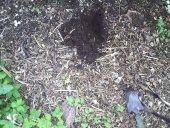
 6
6








 3
3








 3
3




 2
2




 1
1









Idle dreamer








 1
1




Idle dreamer
 4
4












 2
2




My books, movies, videos, podcasts, events ... the big collection of paul wheaton stuff!
 4
4





 1
1
















Windward Sustainability Education and Research Center
Permaculture Apprenticeships at Windward
America's First Permaculture Cemetery? Herland Forest Natural Burial Cemetery
 1
1








Yes, I'm that David The Good. My books are here: http://amzn.to/2kYcCKp. My daily site is here http://www.thesurvivalgardener.com and my awesome videos are here https://www.youtube.com/subscription_center?add_user=davidthegood





Ask me about food.
How Permies.com Works (lots of useful links)









paul wheaton wrote:Sepp Holzer showing how to really do hugelkultur in style - along with a LOT of examples of great success ...




Our projects:
in Portugal, sheltered terraces facing eastwards, high water table, uphill original forest of pines, oaks and chestnuts. 2000m2
in Iceland: converted flat lawn, compacted poor soil, cold, windy, humid climate, cold, short summer. 50m2
















With greetings from Britain
Rosalind




Success has a Thousand Fathers , Failure is an Orphan
LOOK AT THE " SIMILAR THREADS " BELOW !




kai weeks wrote:Wow, that is so beautiful Are those hugels down there?
Azores, Portugal
Europes most Westerly Village "Faja Grande"




It's time to get positive about negative thinking  -Art Donnelly
-Art Donnelly




Explore the Permies Digital Market - ebooks, movies, building plans, courses, and more. Oh my!



|
I have discovered my inner Beavis through interpretive dance. I learned it from this tiny ad:
Freaky Cheap Heat - 2 hour movie - HD streaming
https://permies.com/wiki/238453/Freaky-Cheap-Heat-hour-movie
|



